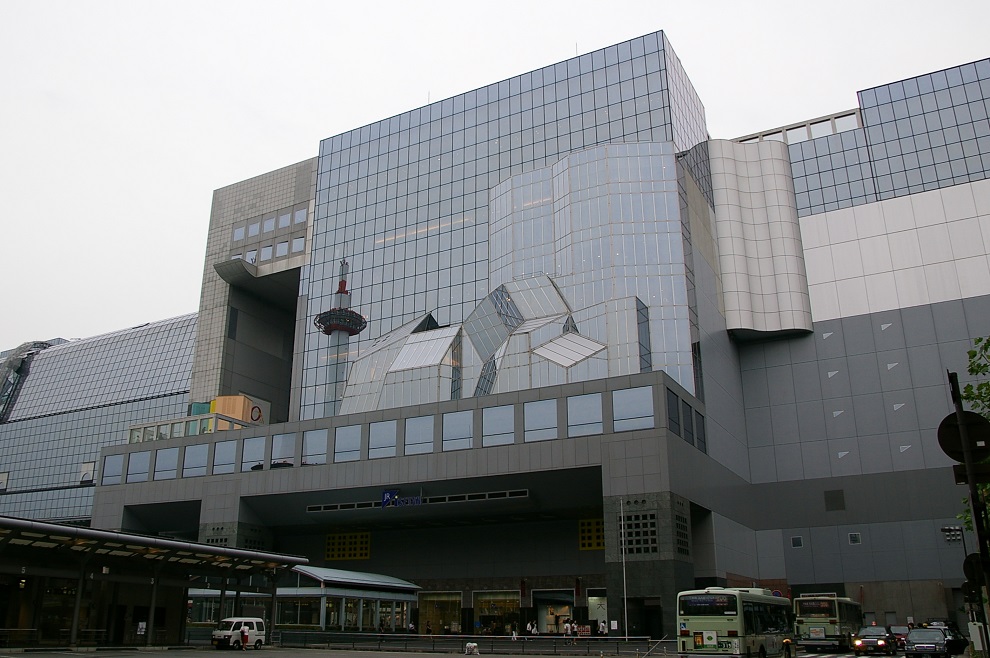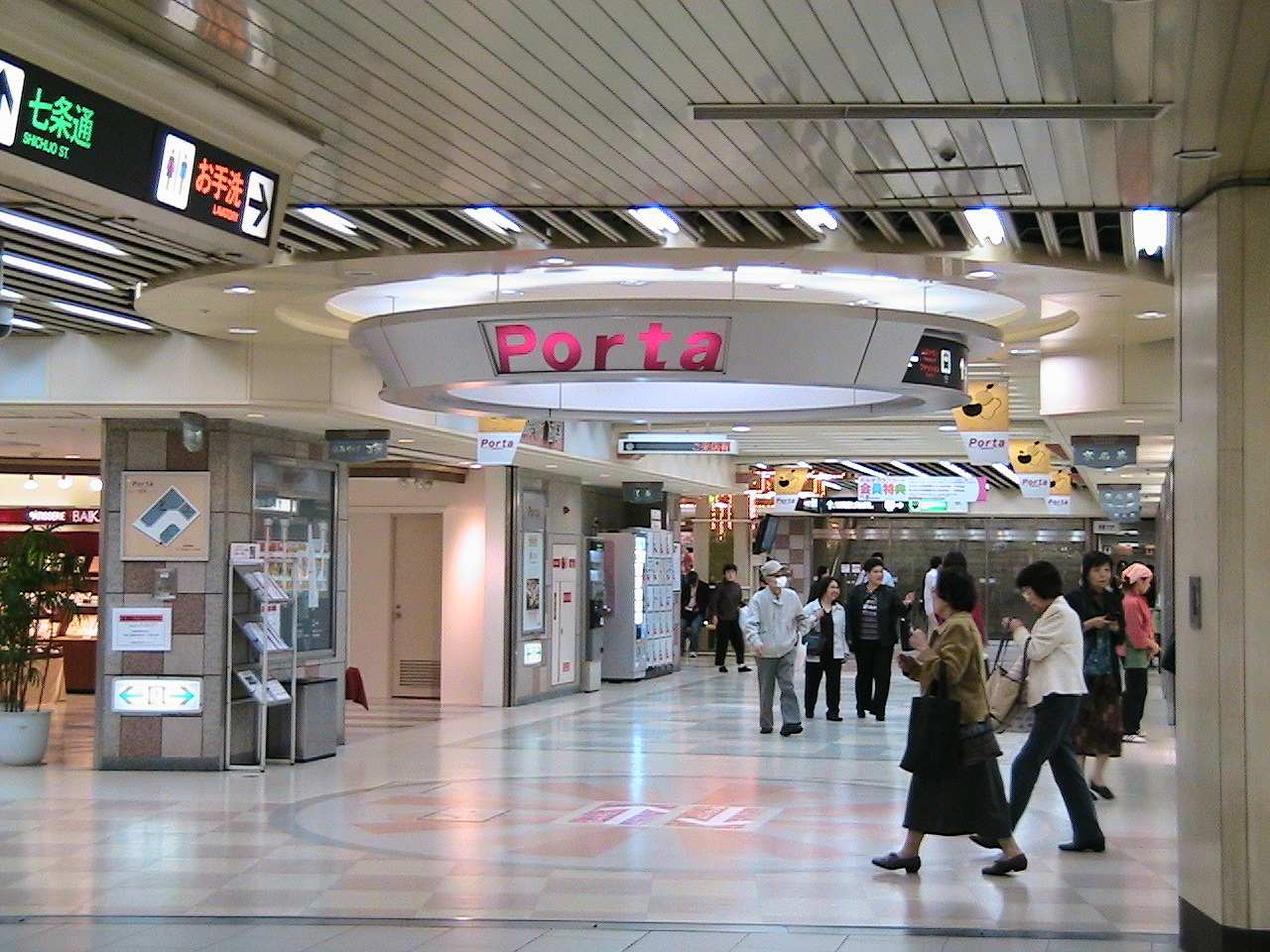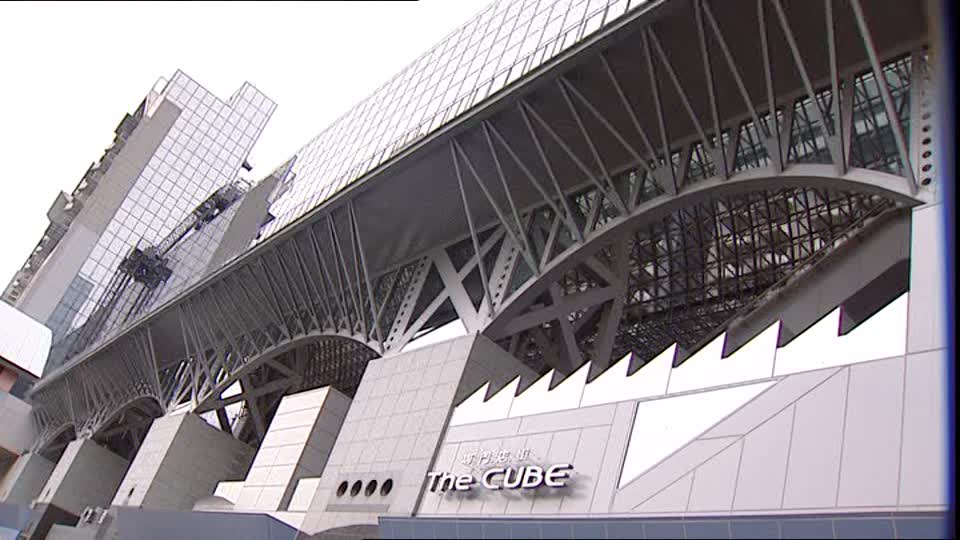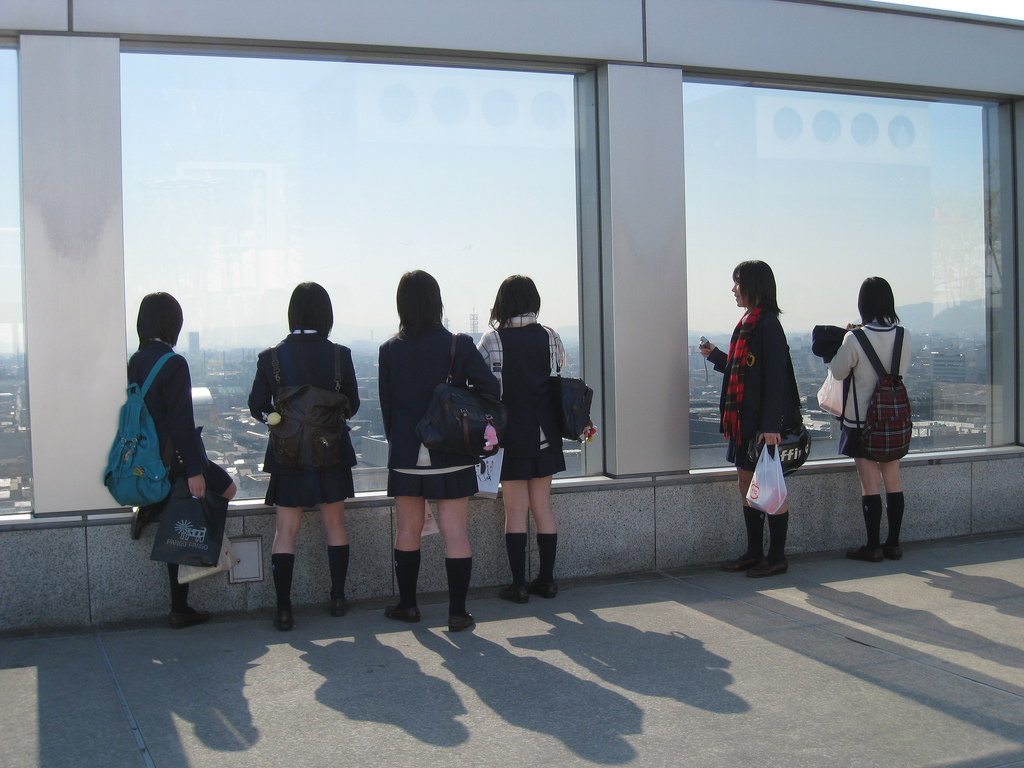Kyoto Station
The Kyoto Station (京都駅, Kyōto-eki) building was constructed on the 1200th anniversary of the capital's foundation in Kyoto. It was opened to the public in 1997 and stands in perfect contrast to many foreign tourists' image of Kyoto as the capital of traditional Japan.
The building's futuristic design and atmosphere was conceived by the Japanese architect Hara Hiroshi. Hara's design attempts to convey historical Kyoto through a modern aesthetic. The station's large main hall with its exposed steel beamed roof, called the Matrix, is meant to reflect both the structure of the station and the grid like layout of Kyoto's street network. Hara also designed the Umeda Sky Building in Osaka.
Kyoto Station is the city's transportation hub, served by Japan Railways (including the Tokaido Shinkansen), Kintetsu Railways and the Karasuma Subway Line. It is also the site of a large bus terminal for city buses and long distance and overnight highway buses.
There are two sides to Kyoto Station: Karasuma and Hachijo. The busier Karasuma side to the north faces downtown and is named after the main street leading downtown. The main bus terminal is located on the Karasuma side, as are many hotels, shops and Kyoto Tower. The calmer Hachijo side to the south provides access to a few more hotels, Toji Temple and some more highway bus stops.
There are also two tourist information centers in the building. The general Tourist Information Center on the 2nd floor offers multilingual staff, pamphlets and some PC terminals for use by tourists. Even more English information is available at the International Information Center on the 9th floor. It is staffed by multilingual representatives and also provides free internet access.
Luggage storage and takuhaibin (delivery service) counters are available in the basement of the station. Coin lockers are scattered all over the building, but not seldomly fill up on busy days. Besides the station facilities, the building's 15 floors offer several other attractions and conveniences including the Granvia Hotel, an art museum, a theater and a vast array of shopping and dining options:
JR Kyoto Isetan department store occupies 10 stories in the western portion of the station building. Goods on sale include clothing, accessories, fresh food, local souvenirs, stationery and more. Isetan also has a small art museum on its 7th floor as well as a range of restaurants on the 11th floor.

Kyoto Station extends underground into the Porta shopping mall. The mall is located under the bus terminal and plaza on the Karasuma side of the station and offers roughly 100 shops and restaurants, as well as access to the Karasuma Subway Line.

The Cube is a shopping mall in the basement of the Kyoto Station building. It offers a lot of local souvenirs, such as sweets and pickles on the first basement floor, and fashion and accessories on the second basement floor. Some of the restaurants on the building's 11th floor are also considered part of The Cube.

Reached via a long series of escalators and a final flight of stairs, an open air observation deck is located on the top floor of the station building. Unfortunately, the views from the deck are not very attractive, because they are only possible through heavily toned windows.

The Skyway tunnel allows visitors to walk the length of Kyoto Station, 45 meters above the central hall. The Skyway's glass windows provide views of the city and station below. It starts from the restaurant floor on the 11th floor of the station building.



































